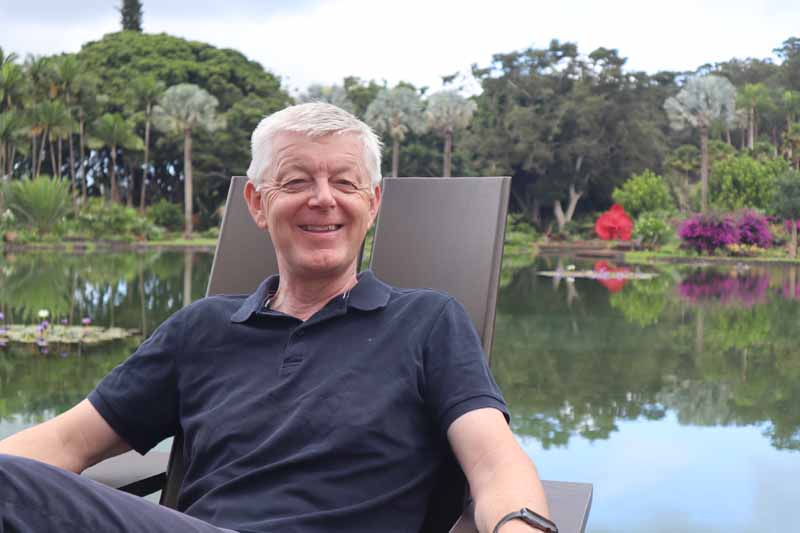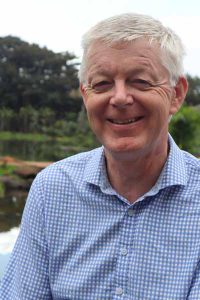
Andrew Gibson is one of the most respected and best known names in wellness, with more than 30 years of experience working in the sector.
Mr. Gibson began his career in banking in London before shifting gears somewhat to study Recreational Management and Environmental Conservation at the University of Manchester after which he opened a luxury fitness facility in the UK, moved to Abu Dhabi and the Sultanate of Oman manage luxury leisure clubs, designed and built a ladies spa in Muscat and raised capital to design and build the award winning Retreat at Aphrodite Hill, Cyprus. He then went on to become the Managing Director that worked with the owners and created and managed Six Senses Hotels & Resorts. That was followed by stints as Group Director of Spa for Mandarin Oriental; Vice President Spa and Wellness for Fairmont Raffles Hotels and Resorts; and Vice President Wellbeing and Luxury Brands at Accor Hotels. He is now the Senior Vice President of Sensei, the new wellness brand created by Oracle founder Larry Ellison and physician David Agus.
Created to increase global awareness of wellness, Sensei recently opened its first resort location, co-branded with Four Seasons Lanai at Koele, on the Hawaiian island of Lanai, which Ellison owns. The resort is an all-inclusive retreat that will focus exclusively on wellness retreats and offer a comprehensive and fully customizable program tailored to the needs of individual guests.
Mr. Gibson is a founding member of the Global Wellness Institute and the Chairman of the Wellness Tourism Association (WTA). Established in 2018 to be the “voice of the wellness tourism industry,” the WTA’s goals are to create a common set of industry standards, to educate and increase awareness of Wellness Tourism, and to provide a networking platform for people in the industry.
We spoke to Andrew Gibson about the WTA, the meaning of “wellness,” and what it takes to become a world renowned wellness destination.
 Please tell us about the goals of the WTA
Please tell us about the goals of the WTA
The primary goal of the WTA is to define “wellness tourism,” as opposed to “health tourism” or “medical tourism.” The WTA is working to help define our industry, and to educate the public so they can recognize legitimate and credible wellness suppliers and operators.
The second goal is to help the industry sell wellness, because at the moment, if you look at hospitality and hotels in particular, it’s actually quite complicated to sell something to somebody looking for wellness. If someone wants to go on a “wellness holiday,” it takes quite a lot of investigation to, first, find out what exactly they’re seeking and, second, to then match that up with premises and locations that can provide it. Our aim is to find a more streamlined way of helping the public understand what they’re asking for, and to provide agents and travel advisors with a better way of communicating what’s available.
What does wellness mean to you?
Wellness to me is a pathway that is part of a journey, such as fitness. It’s part of a process of making you feel better. Reading a book, going to the library, studying arts, gardening, meditation — these are all journeys along the wellness path.
Wellbeing is the ultimate goal. To be in a state of “wellbeing” means that you’ve found a satisfactory condition in fitness, mindfulness, and, to some degree, spirituality. So it’s “mind, body, and soul.” Wellbeing is the state you’re trying to attain and wellness are the different paths along the journey to get there.
Everybody has different ways of describing wellness, and I don’t think any is right or wrong. But, I also think it’s important to create some universally accepted definitions.
This is like how there was once some question over the definition of the word “spa.”
Yes. In the early two thousands, the definition of “spa” was hotly debated. To some it was just a hot tub, to others it was mineral springs. Today we all know that if you say “I’m going to the spa,” you’re going for a massage or treatment, but not long ago it was less clear. That’s kind of where we are with wellness today. Wellness is still in a state of flux where people are experimenting with the use of the word and trying to figure out exactly what it means to them.
That is something that the spa industry has done well. Over the years it has created some standards and definitions, so that if you go to a spa, you kind of know what to expect. I think that’s where the wellness industry has to get.
Why do you think wellness tourism is experiencing such huge growth?
There are different factors. One is that governments in some countries have shifted focus to prevention rather than cure. Studies have shown that it’s a lot cheaper for society to keep people healthy than it is to deal with sick people. So, the media messaging from governments is becoming about prevention, which spurs companies to look at ways of meeting that demand. I think hotels have naturally evolved into wellness. Not too long ago they started putting in swimming pools and gyms, which is now fairly standard in hotels with four or more stars. Then they moved on to adding saunas and spas. Then they added yoga classes and fitness classes. And today — and this really excites me — hotels are thinking about how to weave wellness into the design of the hotel; into the food, the guestroom, and the environment.
Also, there’s just a lot more talk in the media and more awareness of wellness. Factors have combined to increase the demand for thoughtful wellness design and activities.
What do you think is the secret to becoming a world renowned wellness destination?
One thing I’ve learned is that you can have fantastic facilities, wonderful designers, and an excellent menu, but that won’t matter if you don’t have good people with a passion for what they do and who do it really well. You can tell a massage therapist with a natural gift from one that is just going through the motions. That’s the secret of what makes a world renowned spa, wellness facility, or hospitality company: they find the best people.
What about the secret to being a successful leader?
I’ve seen, and worked for, many different types of successful leaders. One thing they all have in common is the ability to motivate. You have to be able to motivate people.
But perhaps the most difficult part of being a leader is learning to let go. You appoint people, give them a clear vision and achievable goals and support them towards those goals. Every member of the team should have goals or clear objectives. And then you have to trust them and let them lead. And you have to accept when doing that, that they will do things differently from you, and even make mistakes. If you want to build a great team that is successful and enjoys what they’re doing, you have to accept that some things are not going to go quite the way you want or expect them to go.
What are you most excited about right now?
I’m very excited that we are on a wellness wave, where wellness becomes interwoven in the fabric of life for many countries around the world. And that opens up new avenues that we’ve not explored, from what wellness will look like in people’s homes to how it will change the shape of design in community and in cities of the future. So, that’s really exciting.
And I’m excited about the next generation. I particularly enjoy mentoring and helping my colleagues that are going to be the next generation of leaders.
 We’ve released our spa and wellness trends to watch for 2020. Sign up for Spa Executive’s newsletter and download the free report! CLICK HERE >>
We’ve released our spa and wellness trends to watch for 2020. Sign up for Spa Executive’s newsletter and download the free report! CLICK HERE >>
Spa Executive magazine is published by Book4Time, the world’s most innovative spa, salon, wellness, and activity management software. Learn more at Book4Time.com.



